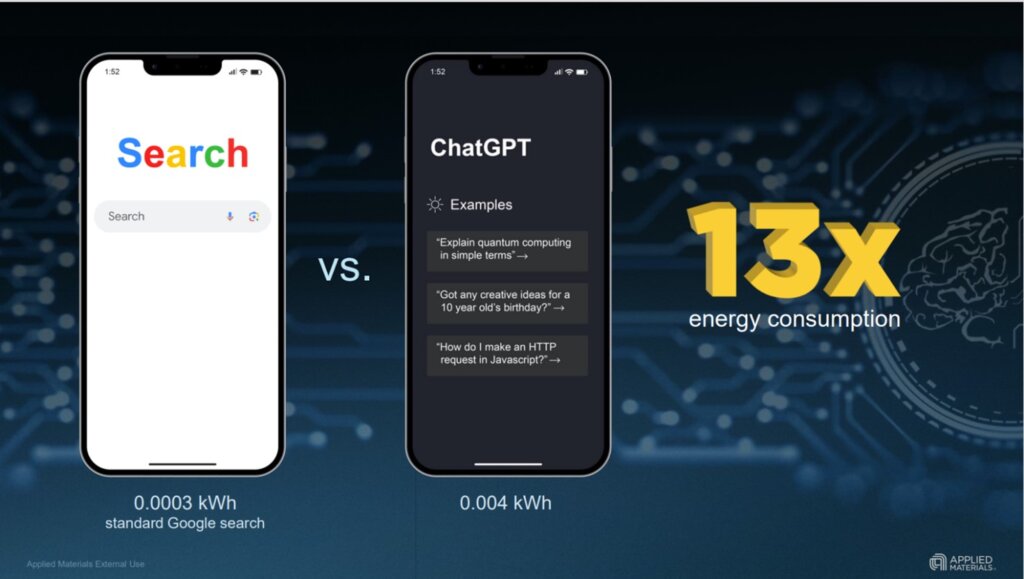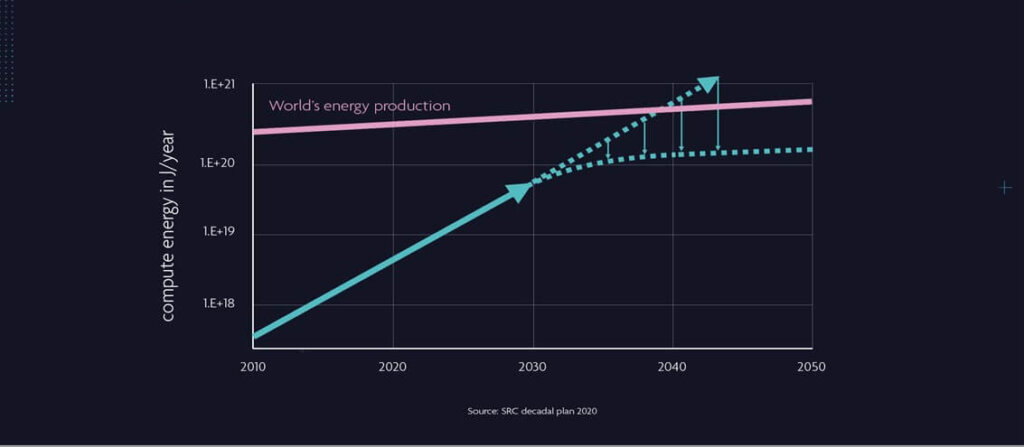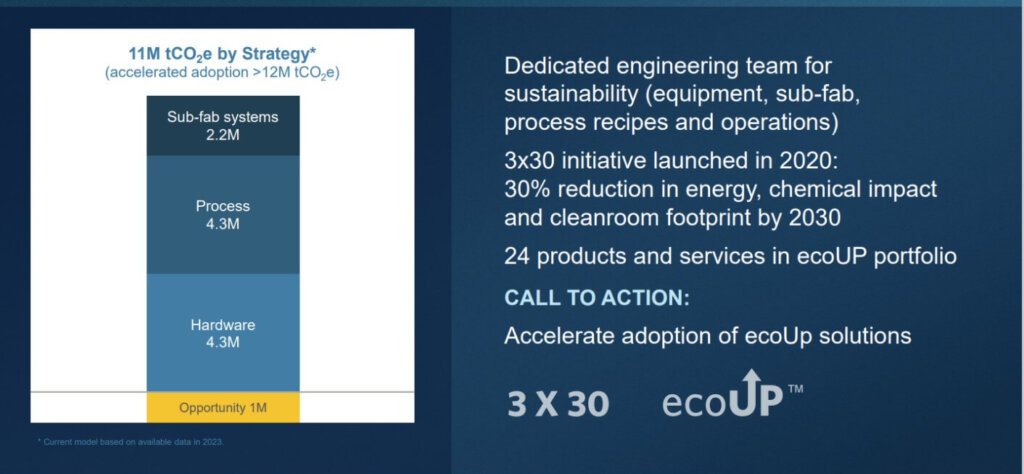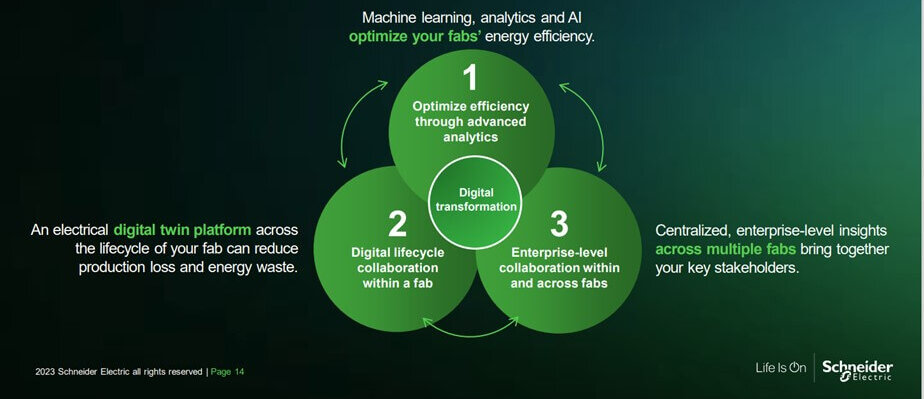SEMI has fully embraced sustainability. Starting slow pre-COVID, they have ramped up and become a significant force in the industry. The organization spearheaded the Semiconductor Climate Consortia, of which 84 members are working cooperatively to encourage collaboration in sustainability and move the industry towards net zero somewhere between 2030 and 2050.
The challenge is formidable as well as complex. As companies are moving towards net zero they have three major areas of focus that they need to focus on. Scope 1, Scope 2, and Scope 3 emissions. For semiconductor equipment companies, Scope 1 and 2 emissions can be addressed using renewables and carbon offsets. Scope 3 is more challenging as the power and chemicals the system uses in the manufacturing process contribute to the equipment companies’ emissions, so figuring out how to offset, or reduce those emissions is a challenge.
Another challenge the industry faces is that AI is driving up power consumption almost geometrically and that chips for AI are consuming more power, which impacts chip and equipment manufacturers’ GHG footprint.
Gary Dickerson of Applied Materials showed that using ChatGPT vs. a Google search uses 13 times the power.

A popular graphic shared during electronic sustainability talks is in Figure 2, which shows the rate differences between energy development, and the amount of energy projected to be used by data centers; and the fact that they are on a collision course.

As I have studied sustainability, one of my concerns is how nonchalantly data center companies say, “It’s all right it will all be powered by renewables.” In looking at the graphic what this tells me, is that data center growth will outpace the pace of renewables, Data centers will price other renewable users out of the market as prices will increase, and data centers will consume most of the renewable energy available, thus making it challenging for other companies to get to net zero.
The Challenge: How to get Everyone to Net Zero
At the SEMICON West 2023 Path to Net Zero talks, Intel, Applied Materials, Schneider, and IBM discussed what they are doing to get their companies to Net Zero, and how collaboration in sustainability will get the industry and supply chain to net zero.
Intel has a long history of working towards sustainability. Having fabs in New Mexico, Intel needed to focus on conserving water at an early stage of its history. Keyvan Esfarjani of Intel discussed how Intel has been working towards net positive water by 2030. Figure 3 shows Intel’s water cycle and the importance of conservation and restoration. Intel’s sustainability website has examples of projects where they have restored water to communities as part of their effort to positive water.

Esfarjani highlighted Intel’s efforts on achieving sustainability targets. Intel is currently 100% renewable in the United States and 93% globally by 2040. The plan is to be net zero on Scopes 1 and 2 and by 2050 Scope 3, which is no small challenge. To do this Intel has a power reduction roadmap for their processors. The energy reduction plans are 3.2x for inference and 1.8x for inference. I would like to see more but moving from 700 watts to 400 watts will save a considerable amount of energy, and hopefully have a considerable impact on the energy curve in Figure 2. Intel has also been collaborating with its supply chain since 2014 to stimulate the importance of sustainability.

Gary Dickerson, Applied Materials (AMAT), outlined the emissions problem from an AMAT perspective. If nothing is done, he said AMAT emissions will increase from 22 million metric tons in 2022 to 55 million metric tons in 2040. Dickerson laid out the AMAT playbook on how it plans to reduce emissions to meet its sustainability goals, including Scope 3. The Playbook includes acceleration grid decarbonization and efficiency, improving product efficiency, which is shown in Figure 5, and improving supply chain efficiency. All of these will, according to Dickerson, will require unprecedented collaboration across the industry and the industry’s supply chain.

Dickerson also discussed how Vistara, a new Applied platform, reduces the equipment footprint and energy consumption, and a software package called EcoTwin which compares process GHG efficiencies and helps companies create low GHG processes. AMAT as the largest equipment supplier can make a significant impact if it’s successful in making the 30% reduction in GHG as part of its 30x30x30 program.
Collaboration in Sustainability Announcement
Schneider Electric gave a slightly different perspective on the GHG problem. While we in the semiconductor industry are looking at how to reduce GHG and hopefully in doing so conserve power. Nearly 800 million people in the world do not have access to energy. However, the way the world economy uses power is not sustainable from both a generating perspective and a GHG perspective. The point Schneider makes is that digital + electric = sustainable. Schneider proposes that 70% of emissions can be reduced by using existing technology.

Schneider proposes by measuring and digitizing fabs the industry could see a significant conservation of power. Implementing a digital solution has the potential to see up to 30% energy savings in a 300mm fab, and a 30% average improvement in efficiency, resulting in a 15% reduction of GHG.
At the end of the Schneider presentation, it was announced that Schneider, AMAT, and Intel were partnering to decarbonize the semiconductor supply chain using Schneider’s Catalyze, a new partnership program aimed at accelerating access to renewable energy across the global semiconductor value chain. For the supply chain to achieve net zero, everyone needs to have access to renewables, the Catalyze can help companies that may not have access or not know how to access renewables to do so, thus helping to reduce GHG in the supply chain.
IBM closed out the discussion but with a little less emphasis on collaboration in sustainability. Dr. Mukesh V. Khare spoke on the future of computing and the need to improve both the programs that are being created for AI, but also how AI is computed. Khare discussed that computing has split into classical computing and quantum computing. Classical computing was boiled down to AI which is becoming increasingly energy inefficient as the AI programs grow. IBM has been talking over the years about Analog AI. To date, I haven’t read much uptake of Analog AI computing so it remains to be seen if it will become mainstream.
The good news is that the industry is working hard and is collaborating to improve sustainability and GHG efficiency for the future. Hopefully, the path is wide enough for the industry to make the turn and achieve the sustainability goals for the future.





















